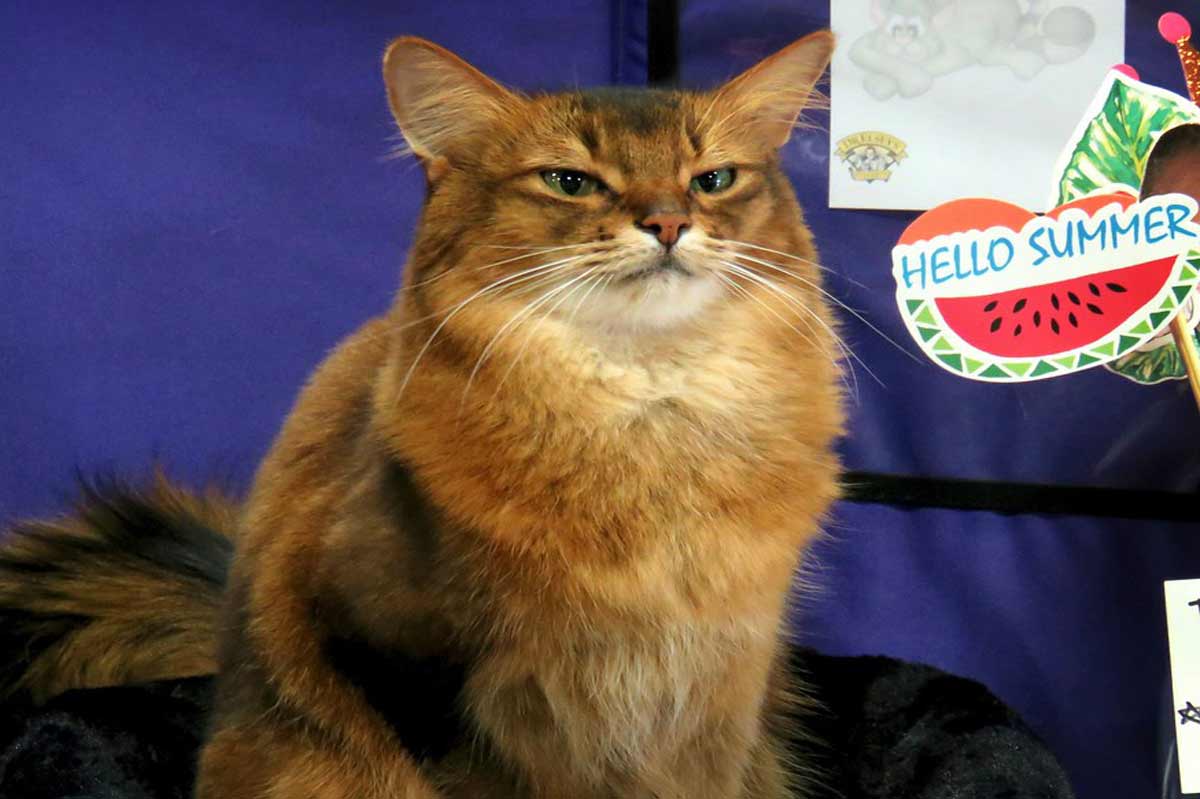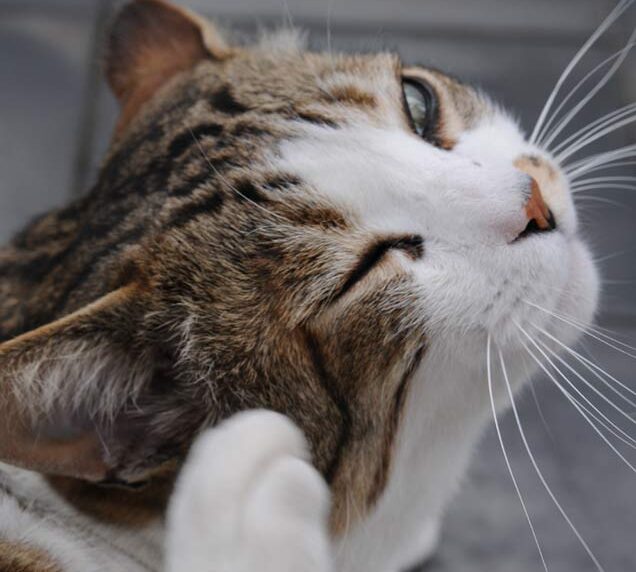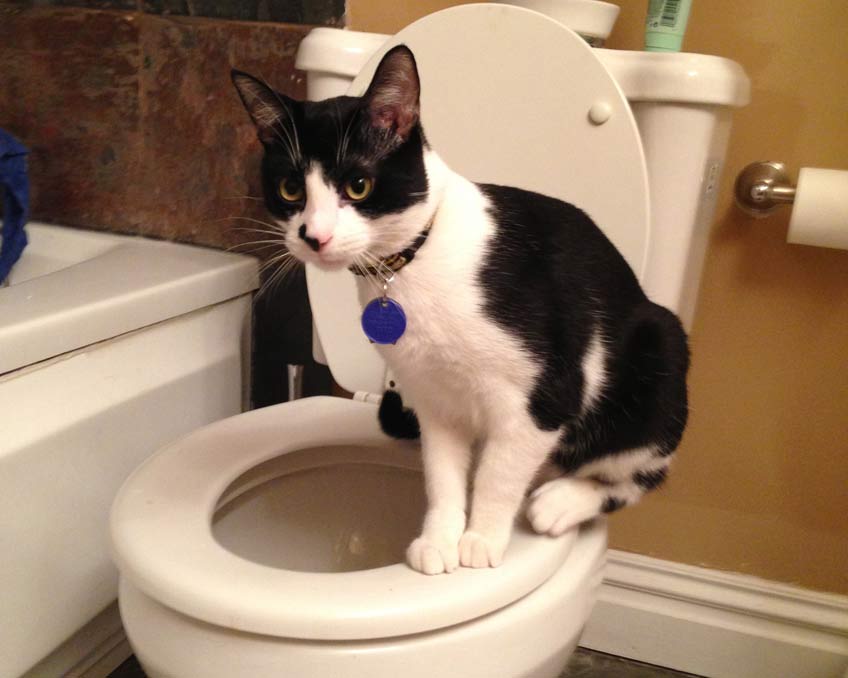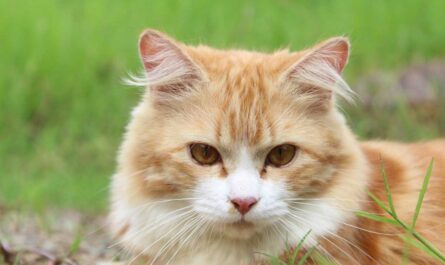How to tell if your cat has a triple coat? Have you ever encountered a feline with fur so gloriously thick and plush, it seems to defy the laws of physics? That magnificent mane might just be a sign of a very special coat type: the triple coat. While less common than single or double coats, this unique fur structure offers a fascinating glimpse into the diverse world of feline fashion – and understanding it can unlock the secrets to keeping your furry friend healthy and happy.
But before we delve into the practicalities, let’s embark on a whimsical journey. Imagine strolling through a sun-dappled forest when you spot a creature of pure elegance. Its fur, the color of spun moonlight, shimmers with an almost iridescent quality. As it gracefully navigates the undergrowth, you notice how the sunlight dances on its coat, revealing layers upon layers of luxurious fluff. This, my friend, might just be a cat with a triple coat, a testament to the wonders of nature’s design.
Intrigued? Well, you’re not alone! Identifying a triple coat can be tricky, but fear not, for this guide will equip you with the knowledge to unlock the mystery. We’ll delve into the anatomy of a cat’s coat, unveil the unique characteristics of the triple variety, and explore the benefits it offers. By the end of this journey, you’ll be able to confidently discern whether your feline companion possesses this remarkable coat type and, more importantly, provide them with the care they deserve.
So, buckle up, cat lovers, as we embark on our exploration of the triple trouble – a journey that promises to be as fascinating as the cats themselves!
Demystifying the Feline Coat: A Layer-by-Layer Look
Before we dive into the world of triple coats, let’s take a step back and understand the basic structure of a cat’s fur. Just like a well-dressed onion, a cat’s coat boasts multiple layers, each playing a crucial role in keeping them warm, dry, and comfortable. The innermost layer, the undercoat, is a dense, soft haven that provides insulation, particularly important in colder climates. Above this lies the guard hair layer, made up of longer, coarser hairs that repel water and shield the undercoat from the elements.
Now, for the pièce de résistance of the triple coat: the awn hair layer. This unique middle layer, present only in triple coats, acts as a bridge between the undercoat and guard hairs. It’s composed of hairs that are finer than guard hairs but thicker than undercoat fur, offering additional insulation and contributing to the overall luxurious feel.
Think of it like a well-made sandwich: the undercoat is the fluffy bread, the guard hairs are the crusty exterior, and the unique, insulating layer of the triple coat is the delicious filling that takes the whole experience to a whole new level!
Triple the Benefits: The Advantages of a Luxurious Coat
So, what makes a triple coat so special? Well, for starters, it’s a champion of insulation. The extra layer of the awn hair acts like a natural thermal blanket, keeping your feline friend warm and toasty even in the harshest winters. This makes them particularly well-suited to colder climates, where a single or double coat might leave them feeling a bit chilly.
But the benefits don’t stop there! The triple coat is also a master of waterproofing. The guard hairs repel water droplets, while the dense undercoat prevents moisture from reaching the skin. This allows your cat to frolic in the snow or navigate a sudden downpour without getting soaked to the bone.
And let’s not forget the self-cleaning prowess of this remarkable coat. The unique structure helps to naturally shed dirt and debris, reducing the need for frequent brushing. Of course, some grooming is still essential, but your triple-coated friend might require less frequent attention compared to their single- or double-coated counterparts.
Breeds with Triple Coats: Unlocking the Secrets
While certain breeds, like the Siberian Forest Cat, Norwegian Forest Cat, and Maine Coon, are known for their magnificent triple coats, it’s important to remember that this coat type isn’t exclusive to them. Just like hair color and eye patterns, the presence of a triple coat can be a genetic lottery, even appearing in mixed-breed cats.
So, how do you know if your feline friend might be sporting this secret weapon? Stay tuned for the next section of this guide, where we’ll delve into the telltale signs and practical tips for identifying a triple coat in your cat. Together, we’ll unlock the mysteries of their fur and ensure they receive the care and appreciation they deserve!
Visual Clues: Unveiling the Triple Layer
First, let’s embark on a visual inspection. Imagine gently parting your cat’s fur along their back or neck. If you have a triple-coated kitty, you’ll be greeted by a fascinating layered landscape. The outermost layer, known as the guard hairs, are long, coarse, and waterproof, acting like a protective shield against the elements. Beneath this lies the middle layer, called the awn hairs. These are shorter, denser, and provide insulation. Finally, nestled closest to the skin lies the undercoat, a soft, downy layer that keeps your feline friend warm and cozy.
But don’t just take our word for it! Look for these visual clues:
- Overall thickness: Does your cat’s fur appear noticeably thicker and fluffier compared to other felines?
- Distinct layers: When you part the fur, are different layers readily visible, with the undercoat peeking through like a soft, hidden treasure?
- Texture variations: Do the guard hairs feel smooth and coarse, while the undercoat feels incredibly soft and plush?
Tactile Exploration: Feeling the Fluffy Evidence
Now, let your fingertips become your investigative tools! Gently stroke your cat’s fur, paying attention to its overall density and texture. A triple coat will feel resilient and springy, resisting matting easily. The undercoat, in particular, should feel like a luxurious cloud, offering warmth and comfort to your furry friend.
Remember, every cat is unique, and even within breeds, fur texture can vary. So, don’t be discouraged if your detective work doesn’t lead to a definitive triple-coat conclusion. The true joy lies in appreciating your cat’s individual fur-bulous nature, regardless of coat complexity.
Seasonal Shifts: A Tale of Two Densities
Do you notice your cat’s fur undergoing a dramatic transformation with the changing seasons? This could be another clue! Triple coats often exhibit more pronounced changes in fur density throughout the year. As winter approaches, the undercoat thickens to provide extra warmth, making your feline friend look like a living, fluffy snowball. Conversely, with the arrival of spring, the undercoat sheds significantly, leaving a lighter, sleeker coat for warmer weather.
Breed Clues, But Not Guarantees
While certain breeds like Maine Coons, Siberian Forest Cats, and Norwegian Forest Cats are renowned for their majestic triple coats, it’s important to remember that breed association isn’t always a definitive indicator. Many mixed-breed cats or even shorthaired felines might surprise you with a hidden triple coat beneath their seemingly simpler fur.
So, the next time you admire your cat’s fur, remember the fun lies in the journey of discovery. Embrace the wonderful individuality of your feline companion, and celebrate the unique fur story their coat tells, regardless of the number of layers. After all, the true magic lies in the love and purrs your cat shares, not just the secrets hidden within their fur!
Beyond the Look: Caring for a Triple Coat
Is your feline friend the epitome of floof, boasting a coat so thick and luxurious it could rival a winter wonderland? If so, you might be sharing your home with a cat sporting a triple coat, a magnificent feature found in certain breeds known for their impressive fur. But how can you tell if your cat belongs to this exclusive club of furriest felines? Worry not, curious cat parent, for this guide will equip you with the knowledge to unlock the secrets of your cat’s magnificent mane!
Feeling is Believing: Unveiling the Triple Coat’s Layers
The defining characteristic of a triple coat lies in its distinct three-part structure. Let’s embark on a tactile journey of discovery:
- Guard hairs: These long, coarse hairs form the outermost layer, acting as a shield against the elements. Imagine them as tiny umbrellas protecting your kitty from sun, rain, and even pesky insects.
- Awn hairs: Beneath the guard hairs lies a dense layer of shorter, softer hairs known as awn hairs. Think of them as the insulation, keeping your cat cozy and warm in cooler temperatures.
- Undercoat: The hidden gem of the triple coat is the soft, downy undercoat closest to the skin. This layer provides unparalleled warmth and waterproofing, making your cat a veritable walking furnace during winter.
So, how do you feel the difference? Gently part your cat’s fur and run your fingers along their back. If you experience a distinct three-layered sensation, with longer guard hairs followed by a denser, softer layer and finally a downy undercoat, congratulations! You might be sharing your life with a triple-coated wonder.
:max_bytes(150000):strip_icc()/persian-cat-getty-0220-2000-d95a324913e34c13812c85f117e471a9.jpg)
Beyond the Look: Caring for Your Floofball’s Triple Treasure
Owning a triple-coated cat comes with the delightful responsibility of keeping their magnificent coat healthy and happy. Here are some purr-fect tips:
Brushing Bonanza: Regular brushing is key to preventing matting and removing loose fur, especially during shedding seasons. Invest in a slicker brush and a fine-toothed comb, and gently brush your cat a few times a week, paying special attention to areas prone to matting like the belly and behind the ears. Remember, patience and positive reinforcement are key to making brushing a bonding experience for you and your feline friend. How AI, ChatGPT maximizes earnings of many people in minutes
Bathing Blues (Not Really): Unlike their single-coated counterparts, triple-coated cats rarely require baths. In fact, frequent bathing can strip their coat of its natural oils, leading to dryness and irritation. However, if your cat manages to get themselves into a particularly sticky situation, opt for a gentle, cat-specific shampoo and lukewarm water. Remember, towel-drying is crucial to prevent chills, and consult your veterinarian before bathing if your cat has any skin sensitivities.
Seasonal Shedding Savvy: Brace yourself, for even the most glamorous fluffballs have their shedding moments. Twice a year, triple-coated cats undergo a dramatic coat blowout, where the undercoat sheds in preparation for the changing seasons. Don’t despair! Regular brushing and a powerful vacuum cleaner will be your allies in this furry adventure. Remember, this shedding is a natural process, and a healthy sign of your cat’s coat adapting to the environment.
Diet for a Fluffy Friend: Nourishing your cat from the inside out is essential for maintaining a healthy, vibrant coat. Choose a high-quality diet rich in Omega-3 fatty acids, which promote healthy skin and reduce shedding. Consult your veterinarian for personalized dietary recommendations specific to your cat’s breed and needs.
Expert Tip: Want to delve deeper into the world of triple coats? Check out our interview with Dr. [Veterinarian Name], a renowned veterinarian specializing in cat care, who shares valuable insights on maintaining the health and beauty of these magnificent furry creatures. Motivation – Mind – Success – Thinking – Productivity – Happiness
Remember, whether your cat sports a single or triple coat, their unique fur is a reflection of their health and well-being. By providing them with proper care and cherishing their individual beauty, you can ensure they continue to radiate confidence and purrsonality in their own unique way. Now go forth, explore the fascinating world of your cat’s coat, and celebrate the magic of feline fluff!
Debunking Myths & Misconceptions
Owning a cat is a delightful journey into a world of purrs, playful antics, and, of course, those mesmerizing coats. But amidst the soft fur and endless petting opportunities, a question might arise: does your feline companion possess the luxurious secret of a triple coat?
Fear not, curious cat guardians! This article delves into the world of triple coats, equipping you with the knowledge to decipher your cat’s fur-rific features. Dive in, and discover if your kitty boasts this remarkable adaptation!
Beyond Length: The Truth About Triple Coats
Let’s bust a myth right off the bat: having long fur doesn’t automatically translate to a triple coat. In fact, many longhaired breeds like Persians or Maine Coons sport luxurious double coats, offering impressive warmth and insulation. So, what makes a triple coat unique? Business – Money Making – Marketing – E-commerce
The answer lies in the layers themselves. A triple coat, as the name suggests, comprises three distinct layers:
- The Guard Hair: This outer layer, often the longest and coarsest, acts as a shield, repelling water and debris while protecting the undercoat. Imagine it as a tiny raincoat for your kitty!
- The Awn Hair: This middle layer, shorter and denser than the guard hairs, provides insulation and traps air, keeping your feline friend cozy and warm. Think of it as a built-in sweater!
- The Undercoat: The softest and fluffiest layer closest to the skin, it offers superior insulation and regulates your cat’s body temperature. Picture it as a luxurious thermal blanket!
These three layers working in harmony grant cats with triple coats exceptional adaptability, allowing them to thrive in various climates. From the chilly mountains of Siberia to the balmy beaches of Maine, these furry friends adjust their coat thickness and insulation based on the season and environment. Health books, guides, exercises, habits, Diets, and more
Myths Melted Away: Addressing Common Misconceptions
Now, let’s tackle some common misconceptions surrounding triple coats:
Myth 1: All Longhaired Cats Have Triple Coats: As we’ve learned, coat length and triple coats aren’t synonymous. Breeds like Norwegian Forest Cats, Siberian Forest Cats, and Maine Coons are known for their triple coats, while others like Persians or Ragdolls typically have double coats.
Myth 2: Triple Coats Require Constant Maintenance: While it’s true that triple coats benefit from regular brushing to prevent matting, they don’t demand constant attention. Brushing once or twice a week, along with occasional professional grooming during shedding seasons, is usually sufficient to keep your kitty’s coat healthy and tangle-free.
Myth 3: Triple Coats Are Only for Cold Climates: While the insulating properties of triple coats shine in colder climates, they offer benefits year-round. The undercoat helps regulate body temperature, keeping your cat cool in warmer weather by wicking away moisture. So, don’t be surprised if your triple-coated kitty enjoys basking in the sun despite their impressive winter attire! Fitness – Meditation – Diet – Weight Loss – Healthy Living – Yoga
Remember, every cat is unique, and their coat reflects their individual needs and breed characteristics. By understanding the wonders of triple coats and dispelling common myths, you can provide your feline friend with the care they deserve, nurturing their well-being and reveling in their unique fur-tastic features!
Additional Resources
- The International Cat Association: https://www.tica.org/
- The Cat Fanciers’ Association: https://www.facebook.com/CFAcats/
- Your veterinarian: They can offer personalized advice on your cat’s specific coat care needs.
By exploring these resources and embracing the fascinating world of cat coats, you’ll deepen your bond with your furry companion and celebrate their unique purr-sonality, one luxurious layer at a time!
Beyond Aesthetics: Embracing the Uniqueness of Your Furry Friend
While the luxurious fluff of a triple coat is certainly eye-catching, it’s important to remember that each cat is unique and deserves appreciation for their own individual fur characteristics. Comparing your feline friend to some unattainable “perfect” standard can create unnecessary stress and neglect the true joy of sharing your life with a furry companion.
Instead of fixating solely on coat type, let’s shift our focus to their overall health and well-being. A cat with a healthy, well-maintained coat, regardless of thickness or layering, is a happy cat. Regular brushing, a nutritious diet, and proper parasite prevention are key to ensuring your feline friend’s fur shines from within. RPM 3.0 – 60% CONVERSION & Money for Affiliate Marketing
Owning a cat with a triple coat can be a truly special experience. These magnificent fluffballs often possess a captivating charisma and regal demeanor, reflecting their luxurious fur. Remember, their beauty extends far beyond their coat; triple-coated cats are known for their playful personalities, gentle nature, and deep purrs that melt even the coldest of hearts.
Fur-ocious Friends Await: Embracing the Diversity of the Feline World
So, whether your cat rocks a sleek single coat, a cozy double coat, or the magnificent triple layer, remember that their uniqueness is what makes them truly special. By understanding the variations in feline fur types and their specific care needs, we can provide the best possible environment for our furry companions to thrive.
As future cat owners embark on their journey into the wonderful world of felines, remember to appreciate the diversity of breeds and individual needs. Each cat, regardless of coat type, holds the potential to bring an abundance of love, laughter, and purrs into your life. Embrace their unique personalities, quirks, and fur-bulous characteristics – you might just discover a lifelong friend in the most unexpected package! Cat accessories on Amazon
Finally, we invite you to share your own experiences with triple-coated cats! What unique traits do they possess? What are some challenges and joys specific to their care? Let’s continue the conversation and celebrate the individuality of all our feline companions, one purr at a time.
Other Interesting Articles
- How to Stop A Cat from Spraying after Neutering: 11 Tips
- How to Tell if A Cat is in Pain from Arthritis: How to Help
- 14 Reasons Why Is My Cat Making Weird Purring Noises
- How to Take Care of A Kitten without A Mother: 21 Tips
- What Is Caterwauling? 10 Most Common Reasons Cats Do It
- How to Introduce A Cat To A New Home When Moving?
- Cat Declawing: Tips, FAQs, Health, Alternatives, Pros, Cons
- New Cat? 20 Common Warning Signs When Introducing Cats
- 23 Sure Signs Your Cat May Be in Pain and How to Help It
- How to Stop A Neutered Cat From Spraying: 15 Simple Tips
- 12 Signs Your Cat May Require a Feline Companion
- Feline Pheromones: 12 Ways Calming Cat Pheromones Work
- Do Cats Feel Lonely without Other Cats? 6 Signs of Loneliness
- 10 Reasons Why Cats Hiss: How To Stop The Behavior
- Cat Feeding: Tips, Guide, FAQs, Chart for Kittens to Veterans
- Cat Vaccinations: Schedule, FAQs, Side Effects, and Costs
- 44 Strange, Weird, and Random Cat Behaviors Explained
- 21 Pro Tips for Fostering Kittens: Essential Care Guide
- 18 Cat Sounds Your Feline Makes: What They Mean
- Sexing Kittens: How to Tell, Determine the Sex of Your Kitten



